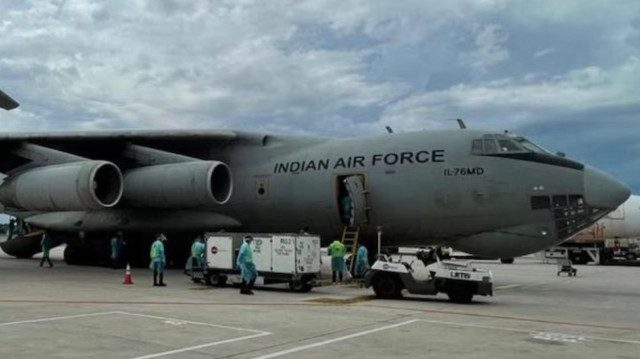Joint Production of IL-76MD-90A Aircraft in India will be great

United Aircraft Corporation (UAC) of Russia has extended an excellent proposal to collaborate with India on the local production of the Ilyushin Il-76MD-90A strategic transport aircraft. This initiative if taken will initially replace the Indian Air Force’s aging fleet of 17 Il-76MD aircraft, originally acquired in the early 1980s and then start augmenting the fleet strength.
This is the most modern version of this venerable transport aircraft.
India needs to have around 48 of these heavy transporters the most essential for a two front war. Another 12 to 18 may be required for AWACS.
By leveraging existing infrastructure and trained personnel already available India, local production could cut costs and expedite manufacturing. Plus, the similarities between the Il-76MD-90A and the older Il-76MD will not only lead to a smoother transition but also ensure a fast build up of squadrons of this heavy transporters.
Currently, the Indian Air Force’s Il-76MD vintage fleet is hampered by older navigation systems, older engines which reduces overall pay load etc. The Il-76MD-90A is the latest and most advanced iteration of the Il-76 family, which can compete with the most advanced American or European heavy military transporters.
The Il-76MD-90A is an advanced heavy lift transport aircraft designed for hefty cargo missions. It has four Aviadvigatel PS-90A-76 turbofan engines, each delivering a thrust of 14,500 kgf. These engines considerably enhance fuel efficiency, extending the aircraft’s range to 5,000 km with a payload of 52 tons.
With a maximum take-off weight (MTOW) of 210 tons, the Il-76MD-90A can transport up to 60 tons of cargo over distances less than 5000km. It cruises at around 780-800 km/h and can soar to a maximum altitude of 12,000 meters (39,370 feet).
The airframe has been upgraded with modern structural components, including a reinforced wing made from new long-life aluminium alloys and state-of-the-art avionics. Its glass cockpit aims to reduce pilot workload significantly and features advanced flight control systems, minimizing the need for a flight engineer.
The aircraft is designed to operate from unpaved runways as short as 2,000 meters, making it ideal for missions in remote or less-developed regions. With a cargo hold measuring 24.5 meters in length, 3.45 meters in width, and 3.4 meters in height, it can transport various oversized military equipment, vehicles, or personnel.
The versatility of the Il-76MD-90A is further highlighted by its capabilities to perform aerial delivery missions, medevac missions, and specialized military operations. It can carry up to 126 fully equipped paratroopers or 145 fully equipped soldiers or 225 lightly equipped soldiers. Furthermore, its modular interior design allows it to be converted into a refuelling tanker or adapted for firefighting operations.
India must consider co-producing the Il-76MD-90A aircraft with Russia. Negotiations can be more favourable to India due to the ongoing economic sanctions against Russia, particularly those imposed by Western nations. In case USA or any Western countries to threaten India over these negotiations, then we will have to strike back in equal measures.
Aerospace systems in Russian aircraft—like avionics, navigation gear, and certain materials such as carbon fibre composites—can be further made in India under collaboration and sourced from these Indian manufacturers. Thus India will develop its own robust aerospace manufacturing capability needed to replace crucial high-tech parts. This will further make the aircraft highly indigenous.
Take India’s progress in making engines, electronics, and airframes through initiatives like the Light Combat Aircraft (LCA) TEJAS, for example. Despite these advancements, the country still remains dependent on Western technologies for high-end avionics, sensor systems, and precision manufacturing. Thus partnerships with Russian companies will lead to expertise in these fields too, just like the nuclear submarine technology.
The above collaboration will also help India in developing its own substitutes.



